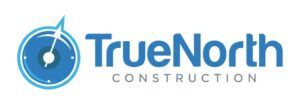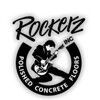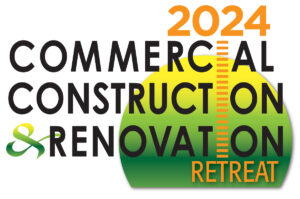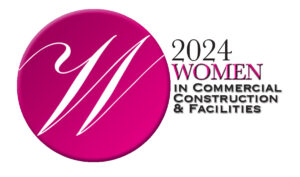 LEED (Leadership in Energy and Environmental Design) certification has been around for the last 15 years. Today, it’s recognized across the globe as the premier benchmark of achievement in green building. And, while not everyone has jumped on the LEED bandwagon, most everyone has embraced the principles and efficiencies of green cleaning technology, programs and services.
LEED (Leadership in Energy and Environmental Design) certification has been around for the last 15 years. Today, it’s recognized across the globe as the premier benchmark of achievement in green building. And, while not everyone has jumped on the LEED bandwagon, most everyone has embraced the principles and efficiencies of green cleaning technology, programs and services.
Savvy building owners and developers recognize the importance of the janitorial function when it comes to LEED certification in existing buildings, as well as its impact on efficient and cost-effective facilities management. But not as many realize the true value of bringing your environmental services partner into the planning of new construction or major renovation.
When brought into the process early, a trusted janitorial consultant actually can help ensure many LEED requirements around maintenance are planned correctly upfront, make efficient building design and material recommendations that can save money in the long run, as well as help identify and prevent unforeseen – and potentially costly – issues that can appear down the road.
This simple act can help you avoid some of the common pitfalls and inefficiencies that hinder LEED certification, as well as negatively affect your desire for an on-budget maintenance program and ability to meet tenant expectations for a sparkling clean facility.
Top Reasons to Consult Your Janitorial Partner Early
ABM has been providing facilities maintenance services for more than 100 years. With thousands of clients in a variety of industries, we have been involved in many LEED initiatives, sustainability programs, and general efficiency improvement efforts. We have been exposed to a variety of maintenance scenarios — especially when it comes to new buildings and major renovations.
Here are some of the lessons we have learned and reasons why you should always include your janitorial partner early in the design and construction process.
No. 1 – Space and Storage Planning
Not having enough work and storage space to best service the building, as well as the location of the space, can affect maintenance team productivity and efficiency. This is especially true with larger facilities and multi-building sites.
Providing adequate space for the maintenance team and their equipment and placing it in a centralized part of the building or campus can reduce travel and transition times and allow the crews to get to work more quickly and stay on task.
Having the proper storage space and staging locations for maintenance supplies such as paper towels, toilet paper, cleaning products, and equipment also is something that can dramatically affect efficiency and should be considered before construction starts.
When brought into the process early, a trusted janitorial consultant actually can help ensure many LEED requirements around maintenance are planned correctly upfront,
No. 2 – Equipment Requirements
Maintenance equipment is another factor that when considered upfront can make a significant difference long-term. The design of the building can determine the type of machines you will require and vice versa. Matching resources and availability to the space can be a key factor in efficiency.
For example, if the building has wide lobbies and hallways and open areas, you might need larger equipment such as riding floor scrubbers to maximize productivity. If so, you will need to consider how to store them, charge them, and deploy them most efficiently. So you might end up needing more storage space as well as wider doorways and elevators to accommodate.
No. 3 – Proper Ventilation
Janitorial closets are a well-known must-have for effective maintenance. However, there are lesser known considerations such as incorporating hot and cold running water, access to electricity and proper drainage for implementing electrolyzed water solutions.
For LEED specifically, you need to make sure there are options for chemical dilution stations and negative air pressure that runs directly to outside ventilation. This ensures any off-gassing, fumes, and other things in the area are not being pumped back into the regular air streams and negatively affecting indoor air quality.
An expert can pinpoint these requirements upfront, as opposed to waiting until, during or after construction when it might become more costly to retrofit.
No. 4 – Fooled by Flooring
While choosing floor materials seems fairly straightforward, there are downsides associated with the most popular – and sometimes the most costly – finishes. You can’t choose flooring based only on aesthetics or budget. You need to consider real-world usability factors such as type of building and clientele, amount of foot traffic, ease of cleaning, special maintenance products that might be required, etc.
One of the most common examples of this is carpeting a high-traffic area. While carpet is usually the most cost-effective option, if it is for a high-volume area, carpet is harder to maintain and will have to be replaced more often than a hard or natural surface that can better handle the wear and tear.
There are also more unique issues. One corporate client used a high quality, slip resistant tile in their restrooms to increase safety. However, they soon discovered that when the tile got wet, it ate away at peoples’ shoes, leaving the floor looking scuffed and dirty. It took much more maintenance than anticipated to keep it clean.
So whether you want to use green-certified materials, luxury finishes, natural surfaces, or carpet, consulting a maintenance expert will help you avoid some of these hazards. Before you order anything, they can advise you on the most practical, best performing, and eco-friendly materials for your specific buildings and needs.
No. 5 – Lobby Luxuries
 Lobbies are another area that can be deceiving. They are usually built to create a wow factor and not necessarily with functionality or the environment in mind. Expensive materials are often used in these applications, and they often come with hidden maintenance costs and limitations.
Lobbies are another area that can be deceiving. They are usually built to create a wow factor and not necessarily with functionality or the environment in mind. Expensive materials are often used in these applications, and they often come with hidden maintenance costs and limitations.
For example, luxury materials are usually chosen for the lobby floor. Studies show, however, that more than 70 percent of incoming dirt is tracked in on people’s feet. It needs to be captured before it gets into the building and upkeep becomes more labor intensive. You need an effective matt program in the lobby, but most people either don’t want to cover their expensive floor or realize how much proper matting can cost.
Also, while luxury lobby materials look nice, be aware that some might need more than just a simple wipe down to keep clean. Or, a warranty might specify using a specific – non-green or expensive – cleaning product that you can only get from a certain vendor.
No. 6 – Automation Options
Even restroom design can still benefit from pre-planning with a janitorial expert. Automated restrooms are much more efficient. They waste less water, electricity, soap, and paper products. They are also easier to clean and maintain because there is less human touch involved.
To maximize LEED compliance, though, you have to make sure you choose the right ultra-low flow sensors for the building and that they are set up correctly. If not, you can decrease efficiency, increase maintenance costs, and create more waste.
Another tip is to choose automated dispensers that don’t lock you into re-filling them with a single product. You want to have options in purchasing re-fill products to get the best pricing and value, use green-certified materials, and get them quickly. This is something not everyone thinks about.
No. 7 – Recycling Room to Grow
Recycling is an important part of sustainability and most everyone has recycling initiatives. However, because planning for this effort is regularly overlooked, there often isn’t enough back-house area available to effectively accommodate waste stream flow and management requirements.
Dumpsters are often hidden behind concrete walls and in basements, which makes it more difficult for tilt trucks to access them, and confines efficient recycling efforts and hinders innovation. Without space for compactors, dumpsters need to be emptied more often, which is expensive.
With just a little bit of foresight and upfront expense, you can break through these barriers and save a lot of effort and expense in the long run. With proper back-house space, sorting stations and staging areas, you can process up to six times more waste and recycling in the same area. This is a huge cost savings and can substantially boost your recycling efforts.
_____________________________________________________________
Alan France, CS-P, CSR-P is director of sustainability, Environmental Services for ABM Industries. He has helped design, plan, and manage sustainability efforts at many ABM clients, including AEG, Staples Center, Levi Stadium, Kings Stadium, Hudson Yards and more.










 The 2024 virtual Men’s Round Table will be held Q4, 2024, date TBD.
The 2024 virtual Men’s Round Table will be held Q4, 2024, date TBD.













